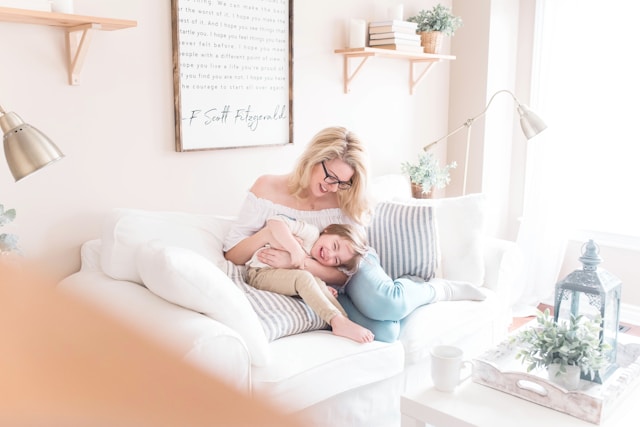When it comes to improving our health, discussions tend to center around leafy greens and the treadmill. Although diet and exercise remain important components, there are other underrated strategies that can boost household wellbeing. Here are a few effective strategies for creating a healthier home environment without dumbbells or kale salads required:

Breathe Clean, Live Clean
The quality of air that we breathe has an enormous effect on our health, from unnoticed particles and allergens to air pollutants which over time can damage our respiratory systems. Invest in a high-quality air purifier to filter out impurities. Bring nature indoors by placing houseplants such as snake plants and peace lilies which not only add beauty but actively help improve the indoor air quality by filtering toxins out. Don’t forget proper ventilation. Open up the windows and replace your HVAC filters frequently to maintain the air. Cleaner air means fewer allergens and better lung health for everyone living under your roof.
Effective Mold Restoration Techniques
Effective mold restoration techniques are very important for creating a healthier living environment. Mold can thrive in damp, poorly ventilated spaces and pose risks for your home’s structure and its residents’ wellbeing. Begin by identifying and eliminating moisture sources such as leaks or high humidity levels, work to address them to stop further mold growth. Thoroughly clean and disinfect any affected surfaces using mold removal products or using water and vinegar mixtures. If the mold problem has spread significantly, or needs immediate attention, you should hire professional mold restoration services to safely and completely address it. Inspect your home regularly to detect future outbreaks. Keeping it dry and ventilated are important elements to keeping mold at bay.
Create a Sleep Sanctuary
Sleep is one of the biggest elements of good health, yet many homes unwittingly undermine its importance. Start by making sure bedrooms are peaceful environments. Install blackout curtains to block unnecessary light, noise-canceling options such as white noise machines or soundproofing materials to promote restful dreams. Upgrade mattresses and pillows when necessary as outdated bedding can contribute to chronic pain or disrupt quality rest. Finally declare bedrooms off-limits from electronic devices. No phones or laptops tempting you into watching “just one more episode”.
Prioritize Hygge Moments
“Hygge,” the Danish term for creating a comfortable atmosphere, can not only be cozy and comforting, it can also be healthy. Introduce soft textures, warm throws, calming candles and scents such as lavender into your home to create an oasis of comfort for you and your family to retreat into when stressed. Those small details help calm anxiety and reduce tension in your household. Invite family members over for intentional downtime such as board game night or simply sitting together around candles in your living room. These moments help combat stress while forging stronger emotional connections.
Water, But Not How You Think
Staying hydrated is important to overall wellness, but its impacts go beyond just drinking it. Make your home an hydration-friendly zone in unexpected ways by installing a water softening system to promote healthier skin by softening showerwater. Or consider introducing a humidifier during dry seasons to keep your skin hydrated and nasal passages comfortable. Even something as simple as taking hotter, cleaner showers, or using filtered water in everyday tasks, can bring “refreshing” a new meaning.
Conclusion
Home health improvement involves more than coring apples or doing yoga in the living room. Instead, its power lies in optimizing your environment in which you live. Clean air, peaceful bedrooms and “hydrated” surroundings are powerful allies when it comes to creating healthier homes. By making small modifications you can build healthier environments which work without breaking sweat (or household peace).



